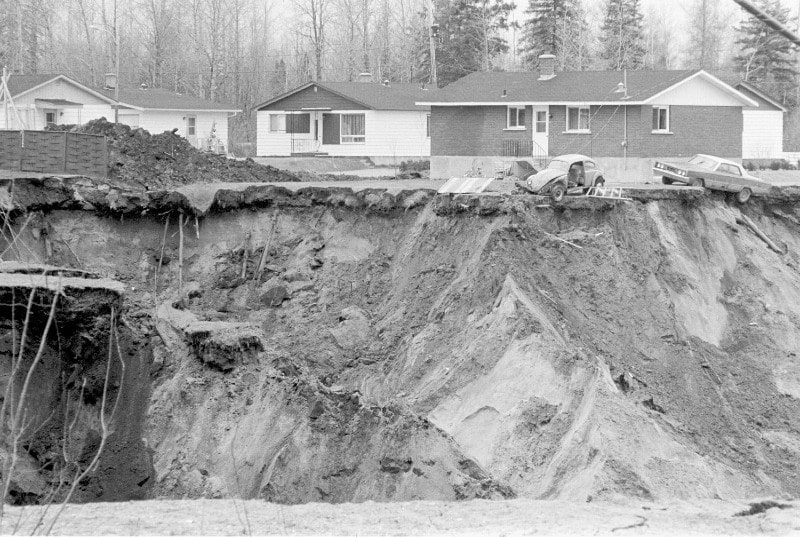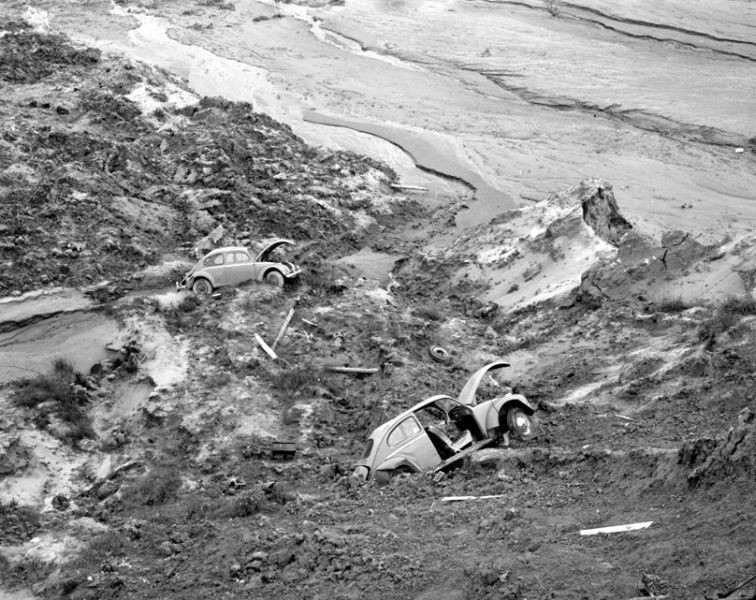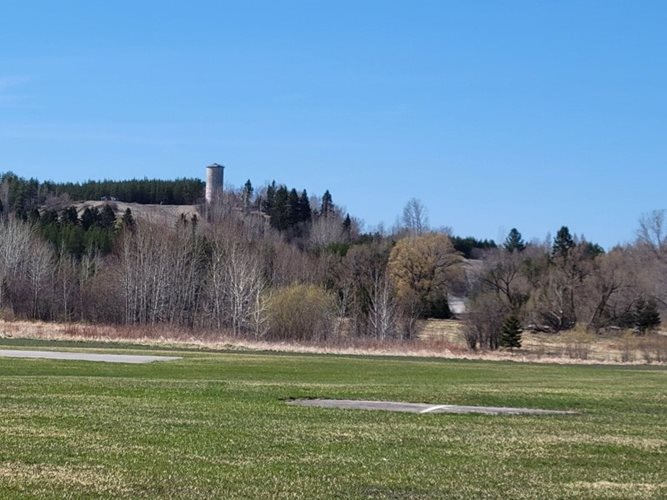Fifty years ago, on May 4, 1971, a landslide swallowed 56 homes in the village of Saint-Jean-Vianney in Saguenay-Lac-Saint-Jean, claiming 31 lives and forcing 1,342 people to seek refuge in reception centres and shelters.

At 10:50 p.m., during a Montreal Canadiens playoff game, part of the village of Saint-Jean-Vianney collapsed. The fact that many people were awake to watch the hockey game probably saved a lot of lives. After being plunged into darkness following a widespread power outage, people panicked trying to flee the scene of the disaster while around 40 homes and 30 cars sank into a massive mud pit.

Emergency services were quickly organized, and Civil Protection services set up a reception centre. Red Cross teams came to help meet the basic needs of residents who could not return to their homes.
Following the disaster, Saint-Jean Vianney was permanently closed, and some 1,700 people had to be relocated. Most of the evacuees settled in Arvida, on former Alcan land, where the Quebec government moved over 200 houses.

Landslides are usually caused by heavy rainfall or melting snow. Although they can occur in any part of the country, the most destructive ones to date have been in the mountainous regions of British Columbia and Alberta, and in some parts of Ontario and Quebec.

Would you know what to do in case of a landslide?
Be ready!
- The key to staying safe is to have an emergency plan in place.
- Listen to local news and weather reports.
- Find out if you live in an area where landslides could potentially happen. Landslides may also be referred to as mudslides, debris flows, mudflows or debris avalanches.
- Avoid actions that could increase instability. For example, don’t undercut a steep bank; don’t build near the top or base of steep slopes; don’t place fill on steep slopes; and don’t drain swimming pools or otherwise increase water flow down steep slopes.
- Learn how to recognize the signs of potential imminent landslides. This could include slope cracks, slope bulges, unusual seepage of water on the slope, sudden changes in stream flow and small rocks falling.
- Watch the patterns of storm water drainage on slopes near your home, especially where runoff water converges.
- Get an emergency kit.
What to do during a landslide
- Be prepared to evacuate at a moment’s notice.
- If you suspect imminent danger, evacuate immediately. Inform affected neighbours if you can and contact your public works, fire or police departments.
- Listen for unusual sounds that might indicate moving debris, such as trees cracking or boulders knocking together.
If indoors:
- Find cover in the part of the building that is the furthest from the approaching landslide.
- Take shelter under a strong table or bench.
- Hold on firmly and stay put until all movement has stopped.
If outdoors:
- Quickly move away from the likely path of the landslide, keeping clear of embankments, trees, power lines and poles.
- Stay away from the landslide area. The slope may experience additional failures for hours or days afterwards.
If in a vehicle:
- Watch for collapsed pavement, mud, fallen rocks and other indications of possible debris flow.
Click on this link to learn more about
preparing for landslides.
Photos: Jules Rochon – BAnQ